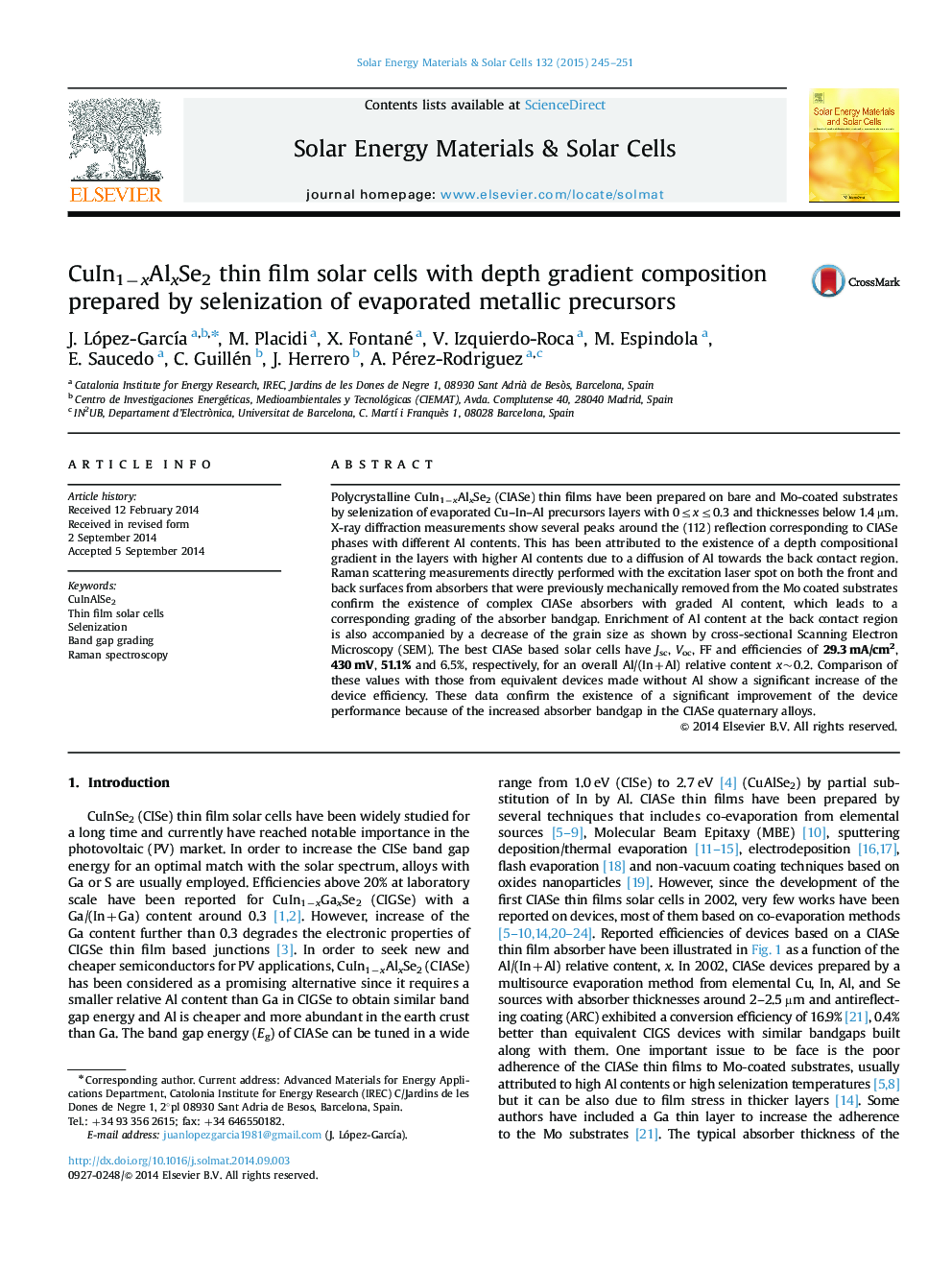| Article ID | Journal | Published Year | Pages | File Type |
|---|---|---|---|---|
| 6535399 | Solar Energy Materials and Solar Cells | 2015 | 7 Pages |
Abstract
Polycrystalline CuIn1âxAlxSe2 (CIASe) thin films have been prepared on bare and Mo-coated substrates by selenization of evaporated Cu-In-Al precursors layers with 0â¤xâ¤0.3 and thicknesses below 1.4 µm. X-ray diffraction measurements show several peaks around the (112) reflection corresponding to CIASe phases with different Al contents. This has been attributed to the existence of a depth compositional gradient in the layers with higher Al contents due to a diffusion of Al towards the back contact region. Raman scattering measurements directly performed with the excitation laser spot on both the front and back surfaces from absorbers that were previously mechanically removed from the Mo coated substrates confirm the existence of complex CIASe absorbers with graded Al content, which leads to a corresponding grading of the absorber bandgap. Enrichment of Al content at the back contact region is also accompanied by a decrease of the grain size as shown by cross-sectional Scanning Electron Microscopy (SEM). The best CIASe based solar cells have Jsc, Voc, FF and efficiencies of 29.3 mA/cm2, 430 mV, 51.1% and 6.5%, respectively, for an overall Al/(In+Al) relative content x~0.2. Comparison of these values with those from equivalent devices made without Al show a significant increase of the device efficiency. These data confirm the existence of a significant improvement of the device performance because of the increased absorber bandgap in the CIASe quaternary alloys.
Related Topics
Physical Sciences and Engineering
Chemical Engineering
Catalysis
Authors
J. López-GarcÃa, M. Placidi, X. Fontané, V. Izquierdo-Roca, M. Espindola, E. Saucedo, C. Guillén, J. Herrero, A. Pérez-Rodriguez,
